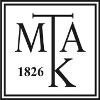Ihász, Petra and Benyhe, András and Sáry, Gyula and Juhász, Zoltán and Navracsics, Judit (2023) Visual Word Recognition Patterns of Hungarian-English Bilinguals – Homograph Effect in Bilingual Language Decision. ALKALMAZOTT NYELVTUDOMÁNY, 23 (1). pp. 36-58. ISSN 1587-1061
|
Text
IhC3A1sz_Benyhe.docx.pdf Download (1MB) | Preview |
Abstract
The present study is part of a larger-scale research in which the processes of written word recognition are studied in bilinguals. The research goal of our lexical decision experiments is to gain information about the temporal characteristics of recognition at the orthographic, phonological, and semantic levels of processing. The research questions concern behavioral differences and the ERP components of recognizing English words, Hungarian words, and interlexical homographs. 23 Hungarian-English bilingual participants were tested in an Electroencephalogram laboratory. In recognition of Hungarian and English words and homographs, the mean response language per participant indicated high accuracy for both Hungarian and English conditions (96% and 98%, respectively). In contrast, the homographs are biased towards English responses (27% Hungarian response). The multiple comparisons confirmed no difference in the mean response times of Hungarian and English words, whereas the interlexical homographs produced around 150 ms longer responses. In recognition of Hungarian and English words, there was no difference between the two categories in the early recognition phases, corresponding with the orthographic-phonological level. However, the neural representation of the two languages differed, later reflecting the differences in semantic or decision-related processes. In the case of the Hungarian- English interlexical homographs, the ERP waveforms did not show significant differences between the items perceived as English or Hungarian. Although there is a difference between the brain activations in the temporal and frontal electrode sites, this difference is insignificant. These data coincide with the former findings related to the homograph effect (Navracsics & Sáry, 2013), which explains that participants are exposed to a greater cognitive burden in the recognition, and the reaction time is longer due to the fact that both lexicons are active.
| Item Type: | Article |
|---|---|
| Uncontrolled Keywords: | EEG, ERP, bilingual visual word recognition, interlexical homographs, language decision test |
| Subjects: | P Language and Literature / nyelvészet és irodalom > P0 Philology. Linguistics / filológia, nyelvészet |
| SWORD Depositor: | MTMT SWORD |
| Depositing User: | MTMT SWORD |
| Date Deposited: | 21 Jul 2023 08:04 |
| Last Modified: | 21 Jul 2023 08:04 |
| URI: | http://real.mtak.hu/id/eprint/170291 |
Actions (login required)
 |
Edit Item |



